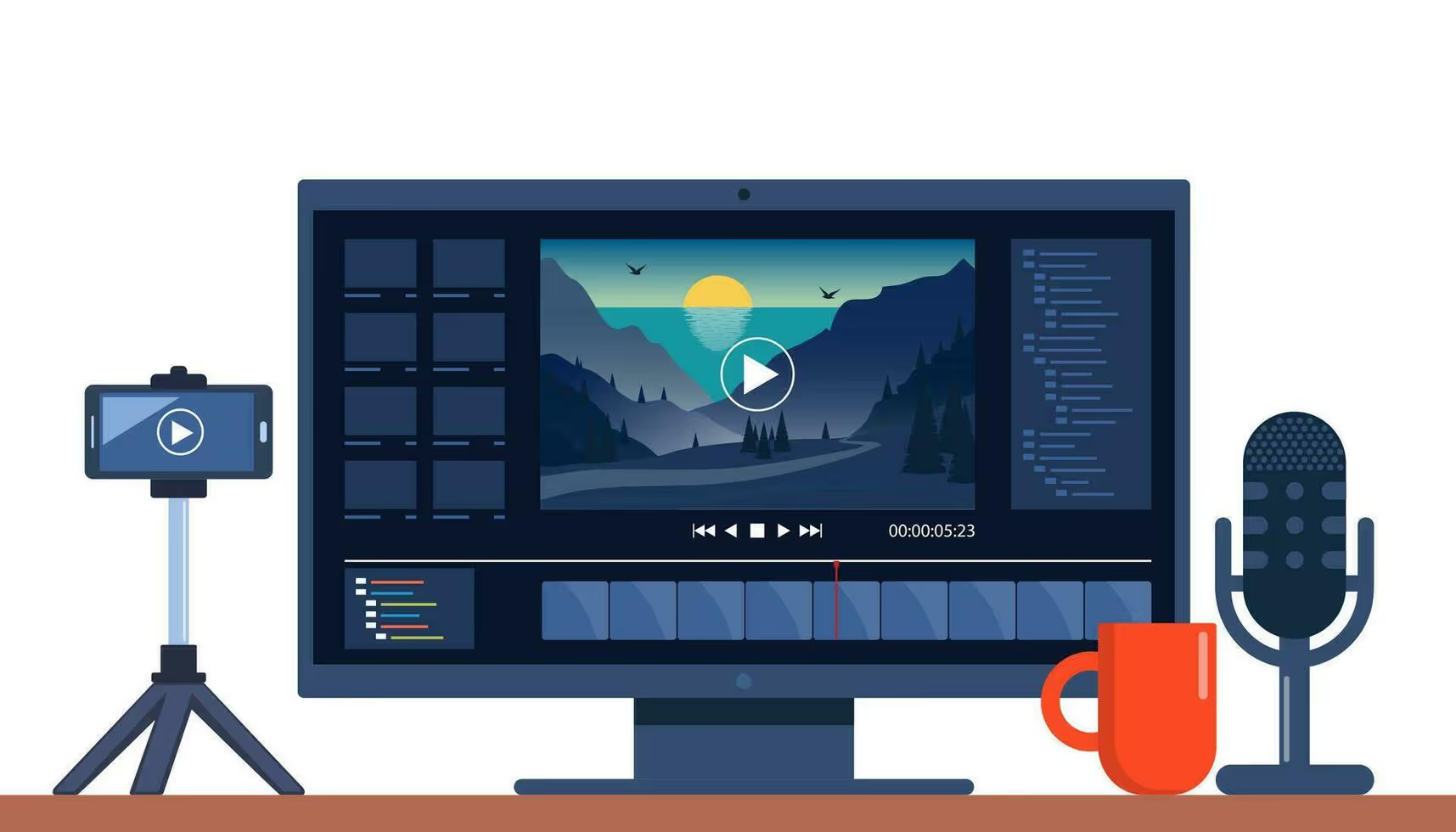Table of Contents
When you begin working with a video production company, you might wonder how much time it will take. It basically relies on three main timeline stages: pre-production, production, and post-production. The duration of each stage varies depending on factors like video length and type, which will be explained in more detail below.
What Goes into Video Production Timeline?

A video production timeline has different steps divided into stages, and each stage can take from a few hours to several days or weeks. The video's success relies on each stage of the production timeline going well. Your video project begins with pre-production, then goes to production, and finishes with post-production. The duration of these stages may vary depending on the type of video you're making, as we'll discuss more below.
Pre-Production: Planning a Concept
Pre-production is the planning phase of video production. It's when both you and the production team clarify the video's goals and what can be achieved before shooting begins. The time needed for filming greatly depends on pre-production because planning makes the process smoother and minimizes reshoots.
Usually, this stage lasts from two to six weeks. How fast it moves along depends on how promptly the client communicates with the production team and the size of the production.
Pre-production involves several steps, all of which impact the video production timeline:
Crew Preparation
First, figure out who will play the major roles in the production as you begin the pre-production stage. Account managers will handle client requests and introduce them to crew members. These members may include the director, who leads creatively; the producer, who plans and oversees; the production manager, who handles practical aspects; and the camera and sound directors. In smaller teams, one person might take on multiple roles, while larger teams may have several people for one role.
Choosing the Cast
Next up is selecting the talent for your video. The client can opt for professional or in-house talent, each with its pros and cons. Professional talent usually guarantees high quality but comes at a higher cost. In-house talent is cheaper but varies in skill depending on who is chosen. Ultimately, the client decides which option suits their video best.
Developing the Concept
The video concept is the main idea the client wants to convey to viewers. If the client doesn't already have a concept, a writer or another representative can discuss with them to better understand what they want to communicate before starting the script. Perfecting the video concept takes time, so if time is limited, it's crucial to finalize the concept early on.
Research
After understanding the video's concept, the writer might need to do some digging to develop the script further. Depending on the project, this could involve talking to experts, getting familiar with a company's personality and key points, or finding more info about the topic. Research is especially important for technical subjects.
Script Writing
Once the research is done, the writer gets down to crafting the shooting script. The final script should give you and the production crew a sense of the video's tone. This is also your chance to review the company's work and suggest any changes.
Also read: All-in-One Animated Video Production Guide You Should Know (2024)
Storyboarding
Next, the script gets turned into a storyboard. A storyboard is like a visual plan of the shoot, resembling a comic strip when finished. It lays out each scene, giving a visual guide before filming begins so the crew knows what to set up. Some scripts may include basic visuals, while others, especially complex ones, require a full storyboard. This is another chance to review and request changes.
Art
If your video involves animation or a lot of graphics, an art team might develop initial ideas based on your preferences. You might have specific ideas about colors or styles, or existing logos and characters from branding. Providing as much detail as possible upfront speeds up this stage.
Coordination
This is the final pre-production step, where the producer gets everything ready for the shoot. Once the storyboard is approved, they organize filming permissions for off-site locations, gather equipment, and coordinate with the cast and crew for filming schedules. So that's all the process about video production timeline, mainly in pre-production timeline.
Production: Filming Process

This stage is when the actual filming happens, with the cast and crew capturing the footage for the final production. Depending on how complex the project is, this could be done in as little as half a day or take several months. It all depends on the type of production.
For instance, the time it takes to film a minute of video for a simple talking head segment versus a documentary varies significantly. Shooting a minute of talking head video might only take a minute because it usually involves continuous filming with minimal cuts. However, for a documentary, a minute of footage could involve shots from different sets and locations, each of which may take hours to capture.
Post-Production: Editing & Marketing

In the final part of making the video, the footage from filming is edited together and, if wanted, improved with animation to create the finished product. This step often takes the most time, depending on how quickly you respond to questions and feedback, the ratio of editing time to video length, and how much footage and animation detail you've asked for.
The Rough Cut
You'll usually get the first edited version within about a week, depending on how complex the project is. You'll review this version and can ask for changes before all the graphics and animations are added. Some companies might include initial graphics or animations so you can see how they fit into the video.
The Approval Cut
After getting your feedback, the production company revises the video to better match your expectations. In this version, they'll also add any graphics or animations if they haven't already. Depending on how much graphics and animations are involved, this could take a few days to a few weeks. Once done, they'll send this revised version to you for more feedback.
Picture Lock
Once they receive more comments, the production company makes final edits, resulting in a "picture lock." This version is then sent to you for a final check to make sure there are no mistakes, typos, or big problems with the video.
Sound Mixing & Color Correction
After the visuals are complete, the audio aspects of the video are adjusted and the colors are perfected. This involves blending music and voice levels for the best mix and enhancing colors and lighting to make the visuals stand out. This step typically takes about a week, depending on the amount of editing needed. Some companies might do this during the initial editing stage, particularly for short videos or series.
Delivery
Once all is done and finalized, the video is delivered to you in high resolution and ready to be shared.
What Factors Affect a Production Timeline?

Although most videos usually take a few weeks to produce, some may require more or less time than anticipated. Your production timeline mainly depends on these three factors:
Video Type
Does your video involve animation, live action, or a green screen? The more effects and post-production work your video needs, the longer it will likely take. For instance, live action videos require minimal post-processing and can be completed quickly. On the other hand, animations require extensive pre-production work like storyboarding and character design, making them time-consuming even for short clips.
Video Length
It's obvious that longer videos will require more time to shoot and edit compared to shorter ones. For instance, a one-hour training video will need thorough editing and might even require reshoots, while a shorter video will be quicker to process at each stage.
Video Style
The style of the video also affects the timeline. A simple talking head video requires only a few continuous shots, whereas a documentary needs multiple shots from various locations. The more shots needed, the longer the production process will likely be.
Despite appearing straightforward, video production can be complex, demanding extensive preparation and adaptability when things don't go as planned. Internal production teams can get overwhelmed when a project requires more resources than initially expected.
Get Your Work Done with Get Camera Crew!
Feeling lost in video production lingo? Navigate the process smoothly with Get Camera Crew! We break down the entire video production timeline, from concept creation to final delivery, ensuring you understand each step and feel confident throughout the process.
and let's turn your vision into a reality, on time and within budget.






